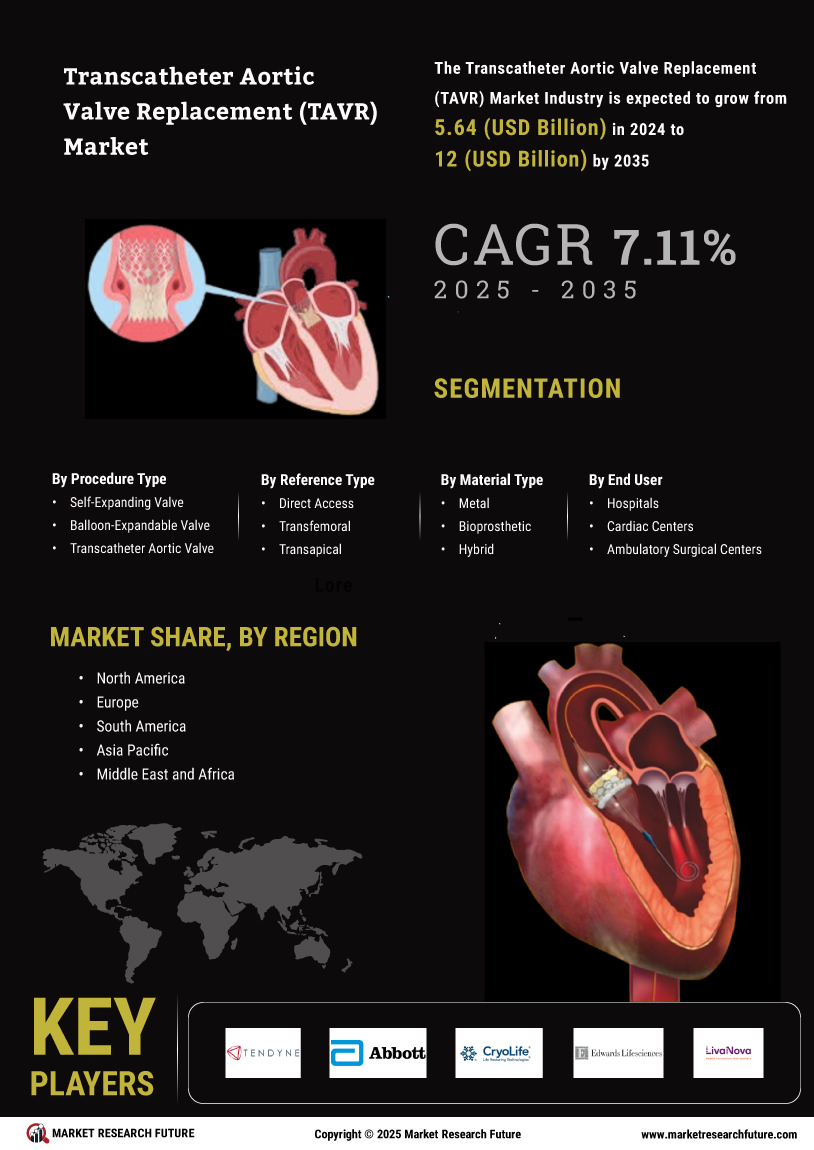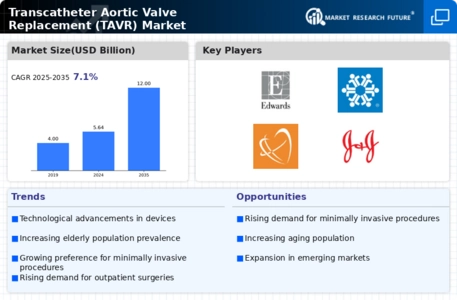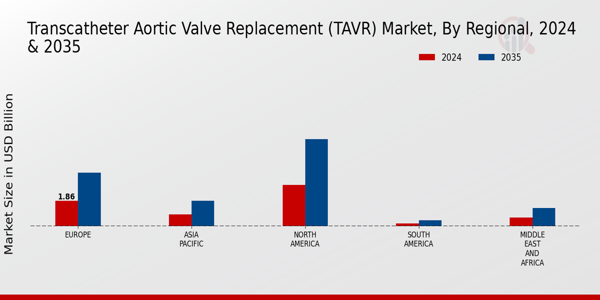Market Growth Charts
Rising Healthcare Expenditure
Rising healthcare expenditure globally is a significant driver of the Global Transcatheter Aortic Valve Replacement (TAVR) Market Industry. As countries allocate more resources to healthcare, there is a growing investment in advanced medical technologies, including TAVR. This trend is particularly evident in developed nations, where healthcare budgets are expanding to accommodate innovative treatments for cardiovascular diseases. Increased funding for hospitals and healthcare facilities enables the adoption of TAVR procedures, enhancing patient access to these life-saving interventions. The market is poised for growth, supported by the overall increase in healthcare spending and prioritization of cardiovascular health.
Supportive Regulatory Environment
A supportive regulatory environment plays a crucial role in the growth of the Global Transcatheter Aortic Valve Replacement (TAVR) Market Industry. Regulatory bodies are increasingly recognizing the benefits of TAVR, leading to expedited approvals for new devices and technologies. This proactive approach facilitates faster access to innovative treatments for patients suffering from aortic stenosis. Additionally, streamlined processes for clinical trials and post-market surveillance enhance the overall efficiency of bringing new products to market. As a result, the industry is likely to see sustained growth, aligning with the increasing demand for minimally invasive cardiac procedures.
Growing Awareness and Acceptance of TAVR
The growing awareness and acceptance of TAVR among healthcare professionals and patients contribute to the expansion of the Global Transcatheter Aortic Valve Replacement (TAVR) Market Industry. Educational initiatives and clinical evidence supporting the benefits of TAVR over traditional surgical options have led to increased referrals for this procedure. Patients are becoming more informed about their treatment choices, leading to a higher demand for TAVR. This trend is likely to accelerate market growth, with a projected compound annual growth rate (CAGR) of 7.1% from 2025 to 2035, as more individuals seek less invasive alternatives for aortic valve replacement.
Increasing Prevalence of Aortic Stenosis
The rising incidence of aortic stenosis globally drives the Global Transcatheter Aortic Valve Replacement (TAVR) Market Industry. Aortic stenosis, characterized by the narrowing of the aortic valve, affects millions, particularly the elderly population. As the global population ages, the demand for TAVR procedures is expected to surge. In 2024, the market is projected to reach 5.64 USD Billion, reflecting the urgent need for effective treatment options. This trend is likely to continue, as the prevalence of heart diseases increases, necessitating innovative solutions like TAVR to improve patient outcomes.
Technological Advancements in TAVR Devices
Technological innovations in TAVR devices significantly enhance the Global Transcatheter Aortic Valve Replacement (TAVR) Market Industry. Recent advancements include the development of next-generation valves that offer improved durability and ease of implantation. These innovations not only increase the safety and efficacy of TAVR procedures but also expand the patient population eligible for treatment. Enhanced imaging techniques and minimally invasive approaches further contribute to the appeal of TAVR. As a result, the market is expected to grow, with projections indicating a rise to 12 USD Billion by 2035, driven by ongoing research and development efforts.






